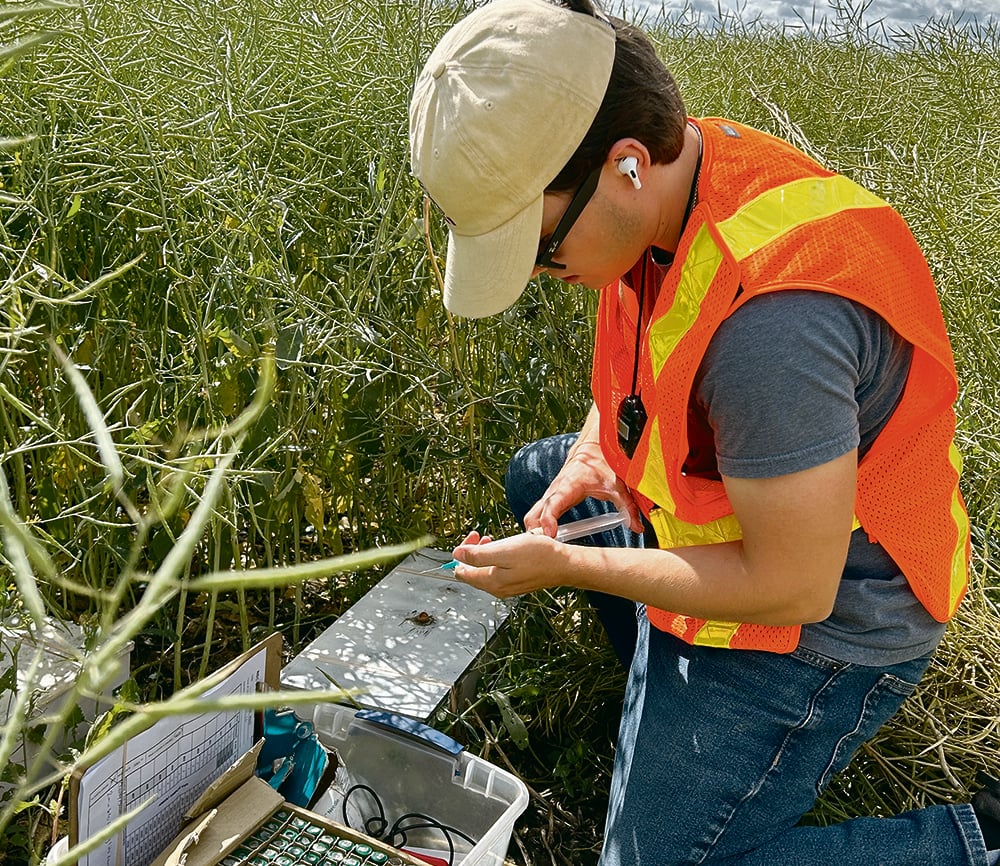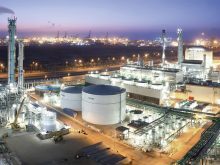Manitoba researchers study ESN and anhydrous blends on canola as a way to achieve profits and protect the environment
Grain farmers want to maximize profitability.
That’s not exactly news.
But increasingly, Canadian grain producers are under pressure to reduce the impact of fertilizer on the environment. Government and grain buyers are asking Canadian farmers to manage fertilizer more carefully to cut nitrogen losses and minimize greenhouse gas emissions from crop production.
One possible solution, to achieve profits and protect the environment, is using a blend of traditional fertilizer and an enhanced efficiency fertilizer.
Agronomists with Enns Brothers, a chain of John Deere dealerships in Manitoba, are trying to identify the “perfect” blend of ESN and anhydrous ammonia. ESN is a controlled-release fertilizer in which a polymer coating covers a granule of urea.
Read Also

Organic farmers urged to make better use of trade deals
Organic growers should be singing CUSMA’s praises, according to the Canadian Chamber of Commerce.
“You band it in the soil …. With moisture and temperature, it will degrade that poly coating and that urea will be released,” said Steve Barron of Double Diamond Farm Supply, a crop production retailer in southern Manitoba and Saskatchewan.
Dave Ives, an Enns Brothers’ agronomist, said using a blend of ESN and anhydrous is not a common practice, but it is gaining traction.
“I would say it’s increased over the last few years — the use of ESN in the blend. It’s definitely increased,” said Ives, who spoke in August at a field day north of Winnipeg.
The event was at Innovation Farms, a commercial-scale smart farm managed by Enterprise Machine Intelligence and Learning Initiative.
Better known as EMILI, it has a mandate to help Canada become a leader in digital agriculture.
EMILI uses Innovation Farms for several purposes:
- To demonstrate technologies that are already on the market.
- To test and validate new technologies to “bring them from pre-commercial to market.”
- To educate farmers and the public about digital agriculture.
“To raise the profile of how tech savvy, productive and sustainable that agriculture is,” said Jacqueline Keena, EMILI managing director.
Fertilizer management and the principles of 4R (right rate, right source, right time and right place) was the main focus of the field day.
Ives, who was one of the presenters, said some corn growers and other producers are experimenting with a blend of ESN and anhydrous ammonia.
“That’s probably the biggest use for it, is corn, because of the longer growing season,” he said, adding that other growers are using the blend on wheat.
“If we want to maintain or increase protein (in wheat), you need the nitrogen right through the growing season.”
The basic advantage of an ESN/anhydrous blend is that the anhydrous is available to the plant early in the growing season and the ESN provides nitrogen later in the spring or summer.
“To minimize losses, that would be the first (reason) to use ESN,” Ives said after his presentation. “A mix of the two would be more efficient (in terms of) nitrogen use efficiency.”
To find the ideal blend, Ives and others are conducting a field-scale trial on canola. This summer was the first year.
As noted on a poster board explaining the research, the objective is to “determine the most efficient nitrogen blend without shorting the availability of N to the canola crop.”
The researchers set up a range of trials where 120 pounds per acre of nitrogen was applied in a mid-row band. The ratio of ESN to anhydrous varied in each trial. They used 30, 60, 90 and 120 lb. of anhydrous, and adjusted the ESN so the total N was always 120 lb.
They also had one strip with 120 lb. of urea, for comparison.
“It’s going to be interesting to compare all these scenarios going forward,” said Ives, who suspects a blend with one-third ESN is likely the ideal scenario.
“That’s where I’m comfortable recommending ESN at…. A lot of data has already shown that, (but) the combine will tell the tale.”
















